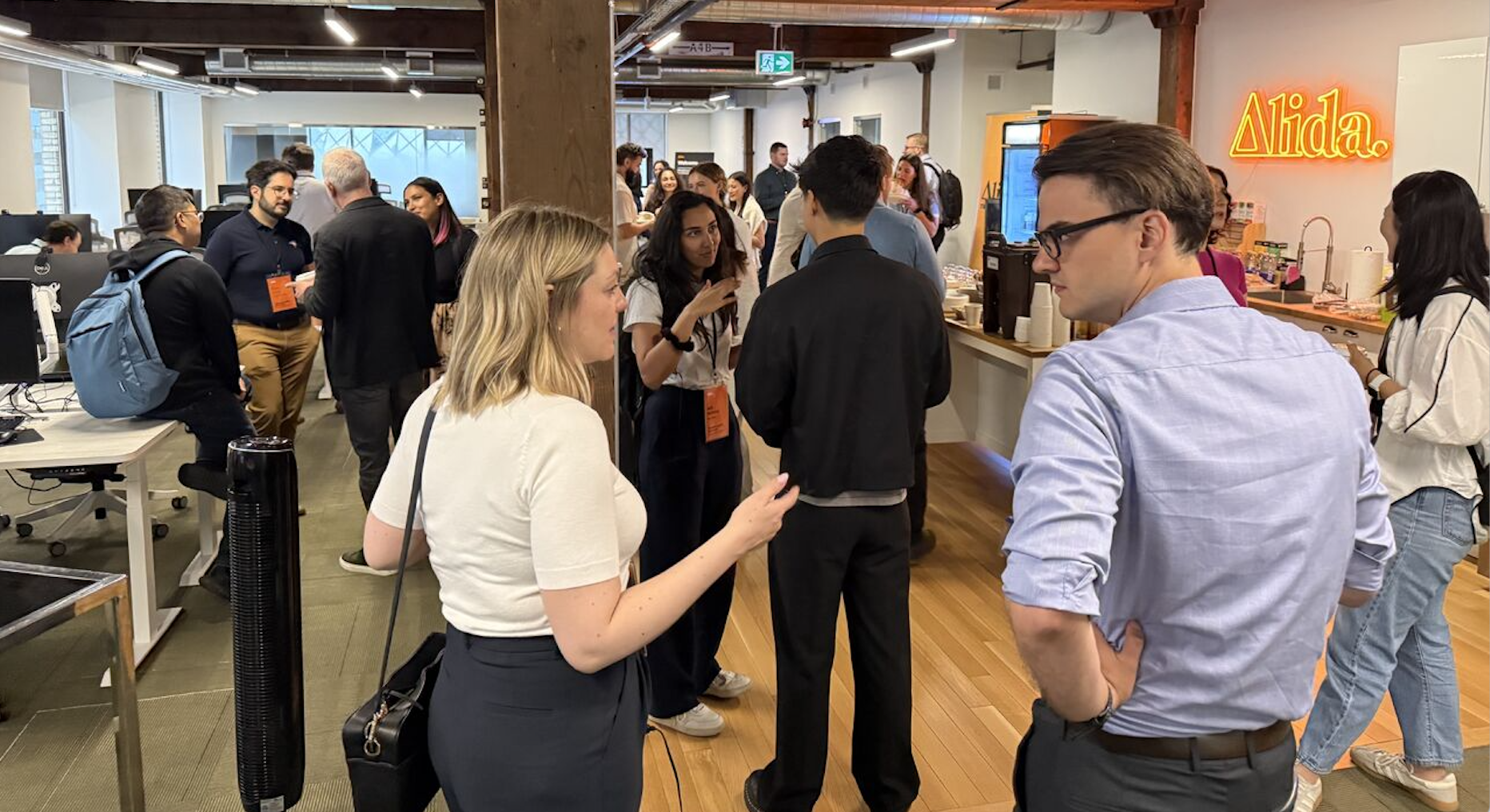UX research removes friction in the digital customer journey
Table of Contents:
UX research throughout the product development process
Choosing UX research methods users actually enjoy
Usability trends are driving the need for deeper UX research
Imagine your company is launching an amazing digital product. You’ve created all sorts of features and functions designed to make people’s lives easier. All they need to do is unlock them.
Yet, users aren’t finding their way to the value, and you aren’t sure why. Perhaps the interface or navigation is confusing. Or, people don’t understand how to complete a transaction. Maybe they don’t even know what’s possible. All the amazing things that are obvious to you aren’t obvious to them.
The cost of that confusion adds up. Frustrated users call your technical support team for answers to simple questions, which increases your costs. Those people post negative reviews that dissuade potential customers. They don’t renew their subscriptions, which impacts revenue.
That’s why UX testing is such a critical part of developing any new digital product or improving a digital platform. If you’re racing toward a launch without taking the time to research, test, and optimize your user experience, you’re leaving money on the table.
When UX researchers come to the table with meaningful data that demonstrates their understanding of users, they become proactive business partners that influence strategic decisions. As Christopher Paul, Sunbelt Rentals’ VP of Digital Products Strategy, Design and Delivery, explains, “The job of a researcher and design team is to be the connective tissue between the end user that exists today versus the one that may have existed some time ago. When you’re providing those insights back to the business, the value of the investment in research becomes very apparent.”
In this blog, you’ll learn how the best performing UX teams are analyzing quantitative and qualitative data to create digital experiences that reduce user effort, increase product adoption, and drive revenue. By integrating product telemetry and behavioral data with Voice of Customer programs and in-depth-interviews with their user community, UX teams can understand what people need today and what they expect for tomorrow.
Read on to learn the challenges faced by US researchers, UX research methods and trends, and how you can integrate them into your process to create remarkable user experiences.
The challenges of UX testing and research
UX teams rely on a variety of approaches and technologies to test and refine the user experience methods. Unfortunately, many of these UX methods provide limited information and can easily lead the UX researcher in the wrong direction.
Data Alone Doesn’t Explain User Behavior
For example, UX programs that rely only on data such as product telemetry and user behavior tracking that tell you what people do during their digital experience, but not why. UX teams must sort through mountains of data, often collected by siloed systems, unraveling conflicting stories and searching for patterns.
Difficulty in Gathering Direct User Feedback
Ensuring that you’re building the right digital experience requires deep feedback directly from users. But getting this type of qualitative data can be expensive and lengthy. Recruiting participants for research is one of the biggest challenges UX teams face. Third-party sample providers can’t guarantee you’re hearing from the right user personas, especially if you need to have certain types of people in your sample, such as technical users for B2B products.
Time Constraints in UX Research
For UX research to deliver on its promise, time is essential. Small but mighty research and UX teams are often under pressure to do more with less, and often spread thin across a diverse digital portfolio. If UX researchers take too long recruiting those types of respondents or analyzing results, they may miss the opportunity to contribute any insights to a rapid product development process.
Lack of the Right Tools Limits UX Impact
Only if UX researchers have the right mix of tools in place can they be proactive business partners to the rest of the business, rather than order-takers that respond when called upon. When that happens, everyone benefits.
“There’s nothing better than when a product leader takes research and design and invests in it and then shows it to other internal product leaders,” says Christopher. “Their response is almost always ‘how do I get what that team got?’”
UX research methods throughout the product development process
UX research isn’t something you should tack on at the end of a project. Rather, it’s an iterative process that should happen continually throughout UX research operations.
“An independent, objective research team sitting alongside a design team is a critical component that leads to business successes", says Christopher. “They’re not just supporting the insights we need to be actionable to inform design decisions, but focused on how we increase our knowledge of the context of use of users over time so we can drive innovation.”
Here’s how UX research methods can fit into every stage:
-
Ideation and discovery. Ideally, organizations bring UX researchers into the early stages of product conception, so they can understand the business goals of features and functionality. At this stage, UX teams can conduct generative research through user interviews, diary studies, and ethnographic research to gain deep insights into motivations and perceptions.
-
Prototyping. At this stage, UX teams build early mockups of user interfaces with some or all product functionality. UX researchers may share different prototypes with users to understand their preferences, and then prioritize and adapt designs based on the feedback they receive. Based on the company’s timeline, UX teams may work with product teams to launch Minimum Viable Products (MVPs) and then make ongoing changes post-launch.
-
User behavior tracking. Once the digital experience is out in the wild, much more user data starts coming in. With product telemetry, UX researchers can see the user flow and usage of specific features and functions. UX teams can also see where users get stuck in different processes to diagnose and solve problems. For example, customers may abandon carts because they can’t figure out how to pay, or they may search for a phone number to call support because they need information on how to make a return.
-
Testing and redesigns. UX research is never done. However, making changes to a live digital experience can be risky, so many digital platforms approach UX for existing products with an ongoing, iterative process. At this point, UX teams often introduce small changes that can have a big impact, for example changing the placement of buttons or wording of UX copy. Micro-changes like these can increase conversion rates, basket size, and repeat purchases. With enough user activity, UX researchers may be able to present different experiences for A/B or multi-variate testing and select the option that performs best.
3 best practices for UX research methods
To conduct UX research that aligns with these trends, user experience teams are adding new tools to their arsenal. The most cost-effective, additive tools are those that meet the requirements for rapid, iterative testing and analysis, and integrate with existing technologies and data repositories.
Most importantly, any tools or methods UX researchers select must be easy and enjoyable for users. At the end of the day, if users aren’t willing to participate in UX research, abandon a study part way through, or aren’t providing accurate, meaningful information, the effort is wasted.
So, what methodologies and solutions should UX researchers explore? Christopher and Rob have some ideas.
1. Private insight communities give engaged users a space to share
Teams that need rapid access to a variety of users are increasingly integrating insight communities into their UX programs. An insight community creates a dedicated online space for research, including surveys, focus groups, in-depth interviews, and more, with a group of participants that have been pre-vetted and have agreed to provide their feedback. You can launch and manage an insight community for less than half the cost of a traditional UX research tool.
Insight communities provide always-on access to users, saving UX researchers crucial time recruiting the right participants and getting them to opt-in to studies. Because an insight community is private and secure, users feel safe providing their feedback and tend to be more honest. Insight communities can be as small as a few hundred users and as large as several thousand.
Benchmarking can further enhance insight communities and UX testing initiatives, providing a structured approach to evaluating feedback and improving digital experiences.
“Community has become the secret sauce of my research strategy for the last 15 years,” says Rob Johnson, UX researcher at Meta (formerly of CVENT and Marriott). “We used to spend countless dollars on incentives just to find people. Now, we’ve made them a part of the process so we don’t need to invest in incentives. They see the value in being part of the system.”
Christopher has also put insight communities at the core of UX research programs. “It creates a two-way street for our users to provide feedback and for us to acknowledge and show the impact of their time,” he says. “People support what they help build and community creates champions and advocates who were involved in helping to shape our products and offers.”
While insight communities are great for deep, ongoing conversations, other UX research strategies are best for in-the-moment feedback.
2. Embedded microsurveys don’t interrupt the user experience
If there’s one thing digital users hate, it’s being taken out of an experience – a purchase, a game, or any transaction – to be sent to a different site to answer survey questions. They often get frustrated and confused and exit the experience, possibly never to return.
To avoid that problem, short surveys can be embedded directly in a digital platform or app, with the same branding and navigation, built into the user flow. These types of embedded microsurveys have higher engagement rates than traditional surveys and have the benefit of capturing user feedback in the moment, right at the point of experience.
3. Usability trends are driving the need for deeper UX research
Superfast, responsive user experiences designed by the likes of Amazon and Netflix have set a high bar for UX teams. Users have come to expect the same types of experiences from all technology, both at home and in the workplace. UX research must adapt to these expectations, with new strategies to test and validate designs.
Here are a few trends UX researchers must keep in mind when developing research studies and gathering and analyzing feedback from users.
Creating personalized experiences
Digital users today expect that when they log into a product, it will remember who they are. Based on a users’ history, digital products often serve up content and recommendations that reflect the context of their relationship. This type of personalization creates emotional connections with users and increases loyalty, likelihood to recommend, and many other metrics important to business growth.
For a UX researcher, that means any user testing must be able to segment customers into different groups, based not just on their search history or purchase patterns, but also on psychographic attributes such as motivations. Empathetic research helps teams uncover these deeper insights by prioritizing emotional drivers, frustrations, and goals that influence user behavior.
For a UX researcher, that means any user testing must be able to segment customers into different groups, based not just on their search history or purchase patterns, but also on psychographic attributes such as motivations. Data-backed segmentation is also an important part of the UX testing process. Instead of asking everyone everything, UX teams are designing experiences for different groups of users and researchers are getting feedback just from those groups.
Putting the user in the driver’s seat
Increasingly, users are seeking to set their own course. Self-service functionality allows for seamless, user-driven product discovery and customization.
For a UX researcher, that means spending extra time understanding whether users feel confident and capable. It means providing people the tools to do what they need and presenting relevant information, without overwhelming them with options.
Ensuring accessibility for all audiences
Inclusive design is an emerging trend in product development that considers the needs of minority or disadvantaged groups of users. It enables the creation of an experience that provides users with a sense of belonging, rather than making them feel excluded.
For a UX researcher, that means doing all you can to remove bias from the research process. Panels, focus groups and any other research sample must include people from different races, income levels, geographies, and abilities.
Examples of UX research methods at fast-growing, innovative brands
Christopher and Rob recently got together to discuss UX trends and the frameworks and tools they recommend. You can listen in on their conversation for inspiring stories and recommendations you can put into practice right away.








